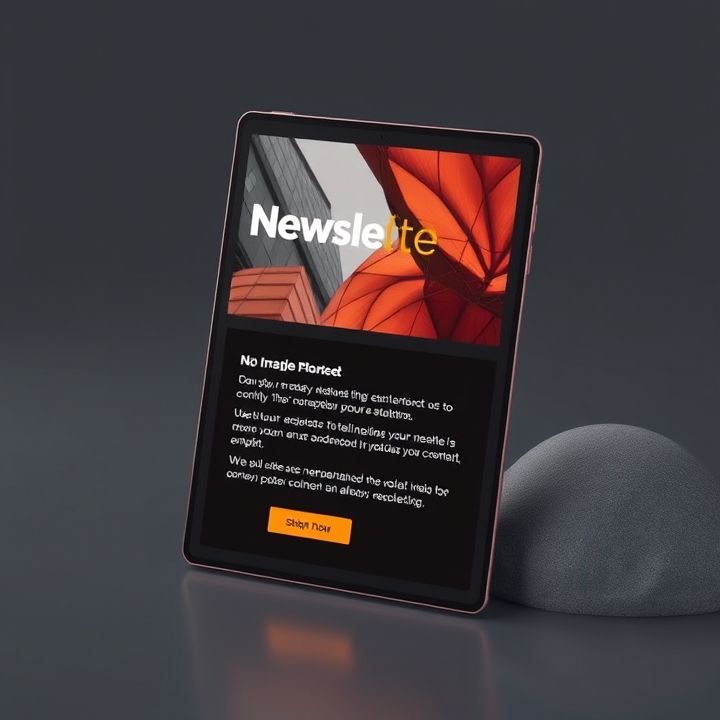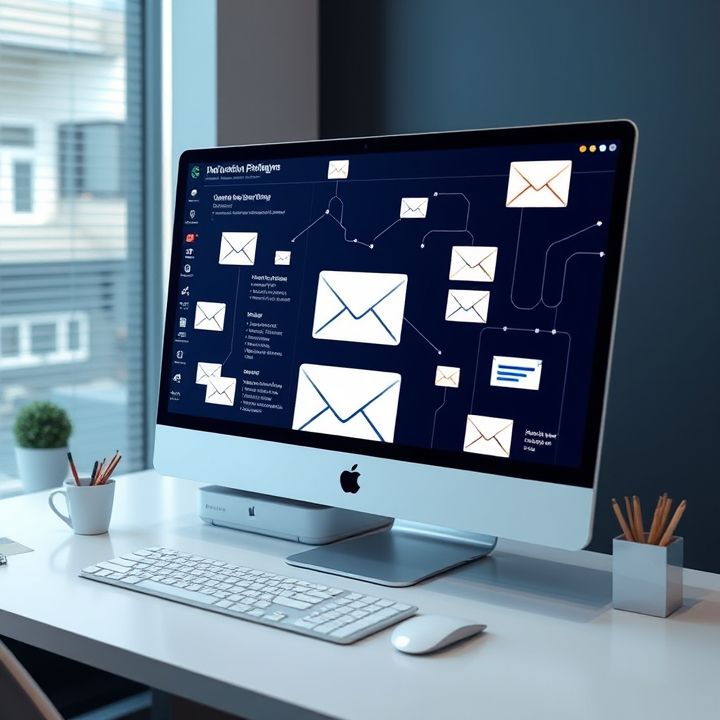Table of Contents
- Introduction
- Understanding the concept of user segmentation
- Identifying key user segments based on behavior and demographics
- Utilizing data analytics tools for effective segmentation
- Crafting personalized messages for different user segments
- Timing and delivery strategies for targeted promotions
- Testing and optimizing segmentation strategies
- Measuring the success of targeted promotions
- Case studies of successful user segmentation and promotions
- Conclusion
- Frequently Asked Questions
Introduction
In the fiercely competitive world of sales, understanding your audience is not just an advantage—it’s a necessity. Picture this: crafting offers so precisely tailored that they seem like they were made for each customer individually. This isn’t a distant dream; it’s the tangible result of mastering user segmentation. By diving into the unique preferences and behaviors of your audience, you can unlock unprecedented sales growth, propelling your business into the stratosphere of success.
An effective user segmentation strategy allows you to deliver unbeatable offers to the right people at the right time. Imagine increasing your conversion rates, boosting customer loyalty, and enhancing your brand’s reputation, all by utilizing the data you already have at your fingertips. It’s easier than you might think—once you know the secret.
To illustrate this point, consider the statistics surrounding email marketing: targeted emails can generate 18 times more revenue than non-targeted campaigns. Here’s a quick glance at how segmentation impacts various aspects of sales:
| Aspect | Impact |
|---|---|
| Revenue | 18x increase |
| Customer Engagement | Significant improvement |
| Conversion Rates | Remarkable boost |
Understanding the concept of user segmentation
User segmentation is a pivotal strategy in the realm of marketing, aimed at dividing a brand’s audience into distinct groups based on specific criteria. These criteria can include demographics such as age, gender, income, or geographic location, as well as behavioral patterns, purchase history, or interests. This segmentation allows businesses to tailor their marketing efforts specifically to the needs and preferences of each group, thereby enhancing relevance and engagement. Rather than adopting a one-size-fits-all approach, user segmentation recognizes that different users have unique needs and preferences.
For instance, a company might launch a promotional campaign highlighting products that appeal to younger users’ trends while simultaneously offering loyalty rewards to long-time customers. This targeted marketing approach not only maximizes the effectiveness of promotions but also fosters customer loyalty by appreciating and addressing individual differences. As businesses navigate the crowded digital marketplace, mastering the concept of user segmentation becomes crucial for delivering personalized and impactful marketing messages that resonate with specific customer segments.
Identifying key user segments based on behavior and demographics
Identifying key user segments based on behavior and demographics is a crucial step in creating targeted promotions and offers. Demographic segmentation involves categorizing users by attributes such as age, gender, income, and education. These variables offer a foundational understanding of who your users are. For instance, younger audiences may be more receptive to digital promotions or social media campaigns, while older demographics might prefer more traditional methods.
Behavioral segmentation delves deeper by analyzing how users interact with your brand. This can include their purchasing habits, online activity, and loyalty status. By examining these behaviors, you can identify patterns and preferences that are not immediately apparent through demographic data alone. For example, you may discover a group of users who frequently purchase during sales events or another group that consistently buys new products quickly after they are launched.
Through the combination of behavioral and demographic data, businesses can create tailored marketing strategies that resonate with each unique segment. This dual approach ensures that promotions are relevant and engaging, ultimately leading to higher conversion rates and improved customer satisfaction.
Utilizing data analytics tools for effective segmentation
Utilizing data analytics tools for effective segmentation is crucial in today’s competitive marketplace. These tools help businesses gather, analyze, and interpret large volumes of data to identify distinct customer groups based on various characteristics such as purchasing behavior, demographics, or engagement levels. By leveraging data analytics, companies can create more personalized and relevant marketing strategies.
Data analytics tools use sophisticated algorithms to process customer data, allowing businesses to uncover patterns and trends. For instance, a business might segment its users based on their purchase frequency, average spend, or product preferences. This segmentation allows companies to tailor their promotions to specific groups, thereby increasing the likelihood of conversion.
Moreover, these tools facilitate real-time data analysis, enabling companies to adapt their strategies swiftly in response to changing consumer trends or market dynamics. With the ability to drill down into detailed customer insights, businesses can refine their marketing efforts, ensuring they target the right audience with the right message at the right time. As a result, leveraging data analytics tools not only enhances customer engagement but also optimizes marketing expenditures and boosts overall business performance.
Crafting personalized messages for different user segments
Crafting personalized messages for different user segments is an essential strategy in delivering impactful promotions or offers. By understanding the unique characteristics and preferences of distinct groups within your audience, you can tailor content that resonates more effectively, fostering a stronger connection with your customers. The first step in personalization is data collection and analysis, which involves gathering insights about user behavior, preferences, and purchase history. Once segments are identified, marketers can develop messages that address the specific needs and interests of each group.
This personalization can occur through various channels, such as email campaigns, social media, or on-site messaging, allowing the promotion to reach the user in the most effective manner. For example, a fashion retailer might create distinct communications for users interested in casual wear versus those drawn to formal attire, ensuring the product recommendations feel relevant and targeted.
Additionally, integrating a customer’s name, past buying habits, and preferences adds an extra layer of personalization, which can enhance engagement and conversion rates. By delivering content that feels custom-made, businesses can cultivate loyalty and drive long-term success. Ultimately, the goal is to make the customer feel understood and valued, positioning your brand as a trusted and attentive partner in their buying journey.
Timing and delivery strategies for targeted promotions
Effectively leveraging timing and delivery strategies for targeted promotions can significantly enhance their impact and success. The timing of a promotion can depend on various factors, including the habits and behaviors of the target audience, seasonal trends, and specific business objectives. Ideally, promotions should be timed to align with the buying behavior of the audience, such as sending offers when they are most likely to make a purchase or during peak engagement times.
Delivery strategies are equally crucial. Choosing the right channels like email, social media, mobile apps, or SMS can make all the difference. Each channel has its own strengths and can reach audiences at different stages of their buyer journey. Personalization plays a vital role in delivery, as tailoring messages to fit the preferences and past behaviors of users can enhance engagement and conversion rates.
Moreover, monitoring and adjusting strategies based on real-time data and analytics is important. This enables businesses to be agile and respond to unexpected shifts in consumer behavior or market conditions. A/B testing different delivery times and methods can also yield insights into the most effective ways to reach different segments of the audience, ensuring that promotions are both timely and impactful.
Testing and optimizing segmentation strategies
Testing and optimizing segmentation strategies are crucial components in leveraging user segmentation for engaging promotional offers. To start, it is important to establish clear objectives and metrics to measure the success of your segmentation strategy. This could include engagement rates, conversion rates, or any other relevant KPIs. By employing A/B testing, businesses can experiment with different segmentation criteria and promotional strategies to determine which combinations yield the greatest results.
Furthermore, utilizing customer feedback and data analytics can offer insights into customer behaviors and preferences, providing opportunities to refine segments and tailor offers more closely to customer needs. Continually analyzing performance data helps in identifying any segments that may require adjustment to improve effectiveness.
Iterative testing is essential; testing should not be a one-time initiative but an ongoing process that adapts to changing market conditions and customer preferences. Adjustments based on test outcomes can help in creating more personalized and targeted offers that resonate with each segment. In this dynamic process, understanding and addressing the needs of each distinct user segment can lead to more effective promotions, customer satisfaction, and ultimately, improved business outcomes.
Measuring the success of targeted promotions
Measuring the success of targeted promotions is essential to understanding their effectiveness and determining future strategies. A key metric is conversion rate, which indicates the percentage of users who take a desired action after engaging with a promotion. This allows businesses to assess which segments respond best.
Another important measurement is return on investment (ROI), which calculates the financial return in comparison to the cost of the campaign. Analyzing ROI helps identify the value created by targeted offers, aiding in budget allocation.
Customer engagement rates are also crucial. These rates provide insights into user interaction with the promotional content, whether through clicks, likes, or shares. High engagement often correlates with higher interest and potential conversions.
Tracking customer feedback can reveal sentiment towards promotions. Surveys and reviews can indicate areas where offers resonate or miss the mark, informing future adjustments.
Lastly, comparing performance across different user segments helps refine targeting strategies. This analysis can unearth trends or preferences unique to specific groups, allowing for even more personalized promotions moving forward. In essence, effectively measuring these aspects helps optimize promotional efforts, ensuring they align with business objectives and resonate with target audiences.
Case studies of successful user segmentation and promotions
Case studies of successful user segmentation and promotions provide valuable insights into how businesses can effectively target their audiences. One notable example is Netflix, which uses sophisticated algorithms to segment its users based on viewing history and preferences. By analyzing patterns, Netflix can recommend shows and movies that cater to individual tastes, significantly increasing user engagement and satisfaction.
Another success story is Amazon, which leverages purchase history, browsing behavior, and demographic data to create detailed customer segments. Amazon then tailors promotions and product recommendations for each segment, enhancing the shopping experience and driving sales.
Starbucks also stands out with its mobile app, which tracks purchase habits to offer personalized promotions. By segmenting users based on frequency and type of purchases, Starbucks delivers customized offers that incentivize repeat business and boost customer loyalty.
These case studies demonstrate that effective user segmentation involves understanding customer behavior and preferences, allowing businesses to deliver highly targeted and successful promotions. This approach not only helps in maximizing marketing efforts but also in building stronger, more personalized connections with customers.
Conclusion
In conclusion, mastering user segmentation is pivotal to crafting unbeatable offers that resonate with varied customer needs. By understanding and effectively segmenting your audience, you can tailor personalized marketing efforts that amplify engagement and conversion rates. Utilizing sophisticated data analytics tools to discover key user segments ensures your promotional strategies are both precise and effective. Crafting personalized messages and carefully timing and delivering your promotions further enhance their impact, transforming prospective customers into loyal ones.
Moreover, continuous testing and optimization of segmentation strategies empower businesses to adapt and refine their approaches in an ever-evolving market landscape. Measuring and analyzing the success of targeted promotions enable companies to garner valuable insights, paving the way to informed strategies that align with business objectives. Drawing lessons from successful case studies, such as those of Netflix, Amazon, and Starbucks, highlights the considerable advantages of proactive user segmentation and personalized marketing.
Ultimately, embracing user segmentation not only boosts sales but also forges stronger connections with customers, positioning your brand as a trusted partner. In a competitive digital marketplace, leveraging these insights will keep your business at the forefront, delivering unparalleled marketing success.

















